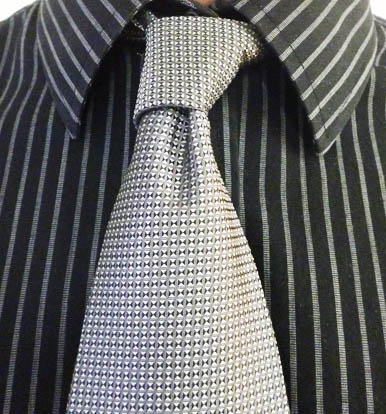Kelvin Knots is just beginning its triumphal march of tie supporters. With his little, slim and symmetrical shape is likely to attract more fans soon.
Reversed and charming
Node Kelvin was so named in honor of the famous nineteenth-century British physicist and mathematician. The name probably came up, Messrs. Fink and Mao, how Lord Kelvin came up with the idea, that atoms are made of knots, on which he built his theory of knots (also field tested by Fink and Mao) did.In fact, the Kelvin knot is an extended version of the Oriental knot. nodes are reversed, That means, ties around the neck seam on the outside. Because the knot should exactly match the cuts collar seam after entering the knot is not visible.
Important
The final step of binding can be done in two ways (see picture) be performed. As in the case of a Prince Albert knot, wide end of the tie through the front or back bar (turns) nodes are inserted. After inserting the front generates a “normal” Kelvin, when reinserted, additional “Kreis” similar to the hybrid knot. This binding type is also called “diagonal” designated. The same name as another node, but is related to it differently and looks rather elegant.
A method of binding – Tie a tie: The Kelvin knot
In a few words
- – Symmetrical
- – narrow
- – Small collar
- – Tie the thin and medium thick
- – Option Diagonale: extravagant Mode
- – Didn't come off

